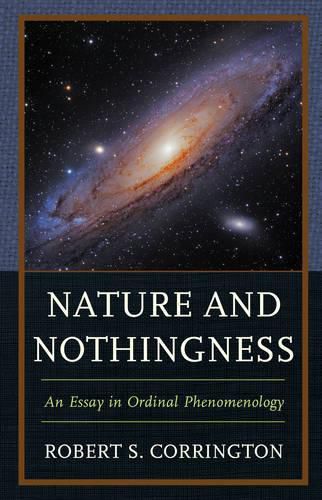Readings Newsletter
Become a Readings Member to make your shopping experience even easier.
Sign in or sign up for free!
You’re not far away from qualifying for FREE standard shipping within Australia
You’ve qualified for FREE standard shipping within Australia
The cart is loading…






Is nothingness found in nature or is it in some realm disconnected from nature? Nature and Nothingness: An Essay in Ordinal Phenomenology argues for the former and explores four types of nothingness as found in nature: holes in nature, totalizing nothingness in horror, naturing nothingness, and encompassing nothingness. Using ordinal phenomenology, Robert S. Corrington reveals the great perennial fissuring within the one nature that there is. The book includes a detailed analysis of religious violence as it correlates to the hoes in nature, such as anxiety, bereavement, loss, fear of fragmentation, and loss of identity. It also examines the various ways in which horror is encountered in a literary context, using the work of Edgar Allen Poe and H. P. Lovecraft. The analysis is comparative and makes use of feminist philosophy as well as Buddhist, Taoist, theosophical, and American philosophy. Using resources from ecstatic naturalism and deep pantheism, Corrington argues that though nothingness takes many forms, they are all guises of the same vast Nothingness.
$9.00 standard shipping within Australia
FREE standard shipping within Australia for orders over $100.00
Express & International shipping calculated at checkout
Is nothingness found in nature or is it in some realm disconnected from nature? Nature and Nothingness: An Essay in Ordinal Phenomenology argues for the former and explores four types of nothingness as found in nature: holes in nature, totalizing nothingness in horror, naturing nothingness, and encompassing nothingness. Using ordinal phenomenology, Robert S. Corrington reveals the great perennial fissuring within the one nature that there is. The book includes a detailed analysis of religious violence as it correlates to the hoes in nature, such as anxiety, bereavement, loss, fear of fragmentation, and loss of identity. It also examines the various ways in which horror is encountered in a literary context, using the work of Edgar Allen Poe and H. P. Lovecraft. The analysis is comparative and makes use of feminist philosophy as well as Buddhist, Taoist, theosophical, and American philosophy. Using resources from ecstatic naturalism and deep pantheism, Corrington argues that though nothingness takes many forms, they are all guises of the same vast Nothingness.